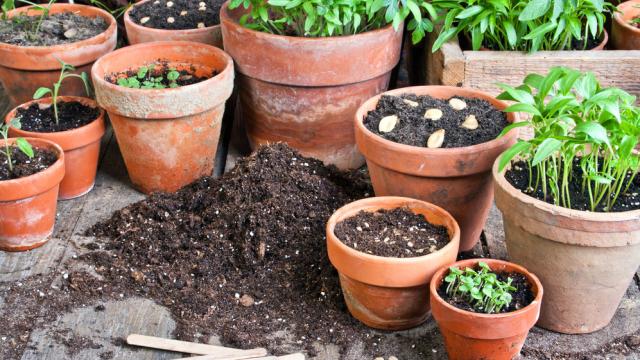One of my many fails as a first-time gardener was letting my greens go to seed. Instead of harvesting bunches of carefully tended kale and lettuce, I waited too long and harvested, well, nothing.
It turns out, though, that getting seeds from your veggies isn’t a bad thing. You can (and probably should) keep some of your seeds for future seasons. Here’s how to collect, save and store seeds from your garden.
Choose the right seeds
First, you have to know which seeds are actually possible to save and store. The University of Minnesota Extension has a handy guide to plants that are easiest to collect seeds from: in general, tomatoes, peppers and beans are good choices because they self-pollinate.
Hybrid varieties and cross-pollinated plants (plants with separate male and female flowers) are more difficult to work with because seeds will likely grow into plants that vary from the pure parent plant. You can use these seeds, but your results will be less predictable.
You can get way into the weeds (pun intended) with seed saving by isolating plants specifically for seed, as this seed saver chart shows. But if you’re a beginner, following some general guidelines will likely get you at least a few things to work with next season.
Harvest and dry your seeds
In some cases, harvesting seeds is as easy as scooping out the inside of your fruits and veggies before you eat them. However, some plants aren’t mature when they’re picked and eaten, meaning you’ll have to sacrifice a few, leaving them in the ground or on the vine in order to collect seeds. Greens generally produce seed after the plant has flowered, and bean and pea seeds actually dry best if pods are left on the plant.
The Old Farmer’s Almanac’s seed-saving guide walks through how to harvest different types of plants as well as how to prepare seeds for storage.
Make sure you’re selecting seeds from healthy plants only. Seeds can carry on bacteria and disease, and planting infected seeds will set you up to fail right from the start. If you do suspect contamination, there are a few methods for seed cleaning — but your best bet is to keep healthy ones to begin with.
Once you’ve harvested your seeds, you’ll want to dry them for storage. Some seeds, like tomatoes and cucumbers, have to be fermented first. The Almanac’s seed-saving guide has specific instructions for each plant.
Store seeds in airtight containers
Seeds save best in airtight containers kept in a cool, dark and dry place. You can also store seeds in your refrigerator or even freeze them. Keep each type in a separate container — small glass jars or even recycled pill bottles work well.
Be sure to label containers with the name, variety and date as well as any other details about the plants you harvested the seeds from.
How long to save your seeds
Some seeds will save safely for only a year (onions and shallots), while others (tomatoes, cucumbers and squash) can last for five or more if stored properly.
When you’re ready to plant next season, you can trial-and-error your way to determining whether your seeds are good, or you can do a germination test recommended by The Old Farmer’s Almanac:
Put 10 seeds of a single variety on a damp paper towel, fold the towel, place it in a Ziploc bag and place the bag in a warm spot. After about a week, check to see how many have sprouted. If it’s most of them, great — your seeds are still viable, and happy planting!

Leave a Reply
You must be logged in to post a comment.